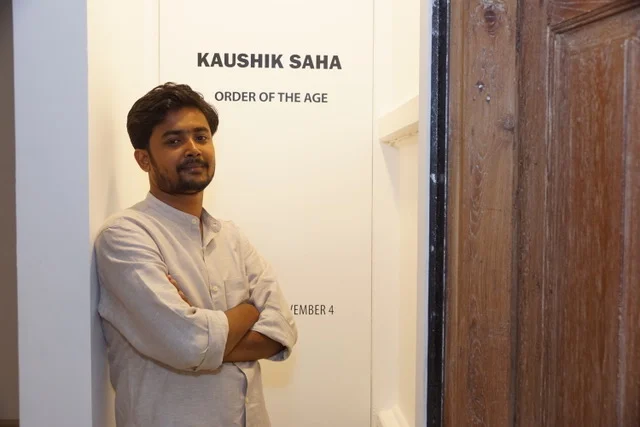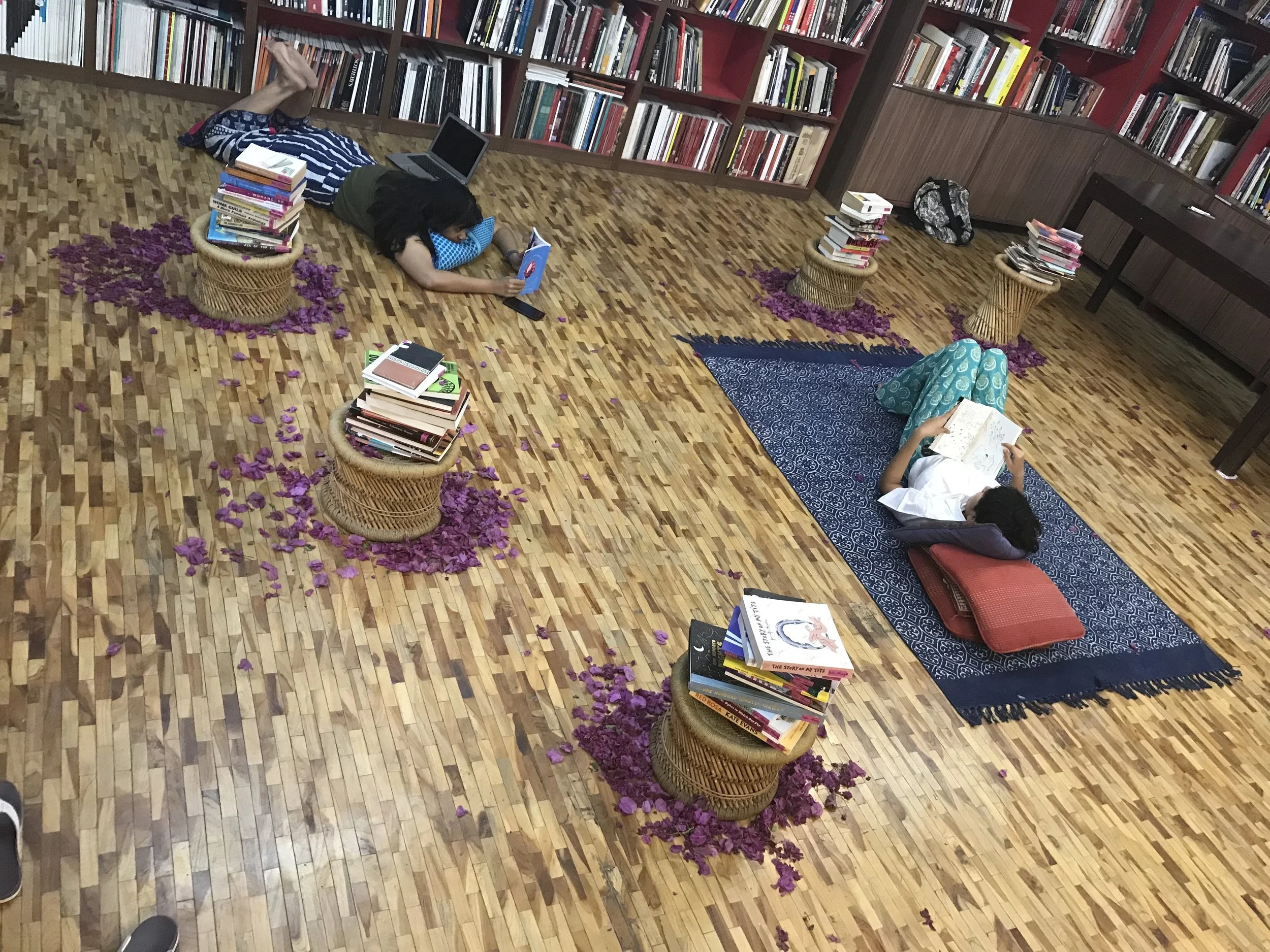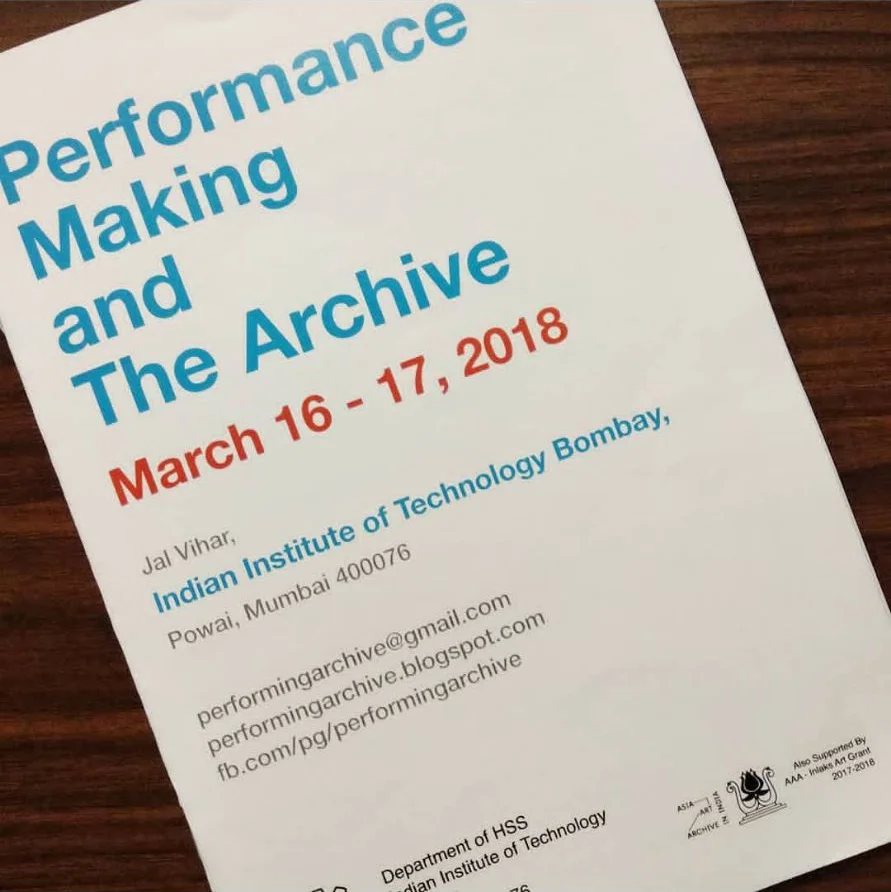Awardee Update: Kaushik Saha
The Foundation is pleased to have two of its recipients come together as alumnus Indrapramit Roy (1990) writes an essay about the practice of fine art awardee Kaushik Saha (2014).
Image courtesy the artist
Kaushik’s generation (he was born in 1989) has been hit rather hard with a number of dilemmas. Born at a time when the old certainties of the bi-polar world were giving way to a unipolar world he grew up in a society that was enmeshed in a mind numbing cacophony produced by the ease of telecommunication, internet proliferation, electronic media onslaught, a mad rush for breaking news that is more fire than light and designed to keep us in a perpetual state of siege.
Image courtesy Gallerie Mirchandani and Steinruecke
As an art student in an academy that clung to a pedagogy harking back to the academic certainties of the colonial era, raised more questions in his early years than he could possibly find answers for. Kaushik was certain that he needed to widen his horizons and only then could he hope for a linguistic trope that would allow him to grow a distinct voice. With an instinct for self-preservation, a doggedness borne out of the necessity to escape the cul-de-sac, he moved to Baroda for his post graduate studies in 2012. He was in awe of the grand figurative narrative tradition of Baroda and the move allowed him a liberating perspective and a different narrative.
Landscape has always had a major presence in Kaushik’s oeuvre. A barren, undulating, churning landscape painted in a quasi romantic-expressionistic flourish remained the mainstay of his imagery for quite some time. The landscapes have no vegetation but are pock marked with that ubiquitous marker of a consumer society – the advertising billboard or the hoarding. These structures on trussed metallic pillars – our civilizational footprints that crop up in the unlikeliest places, defacing nature – held his fascination to such an extent that at one point he wanted to paint on actual hoardings. It is another matter that Kaushik’s landscapes are rarely what they seem to be at first glance. The rich surfaces of sweeping gestural paint use mark making techniques of a wide variety. His paint is often poured, dragged, splattered, daubed, scraped, allowed to congeal. In the large works on board the painted surface is often overlaid with zillions of rusty nails hammered on and then conjoined with lengths of copper wire zigzagging through the nail heads. Some of the works have flattened bicycle tyre tubes making up much of the surface on which paint is applied. The humble tubes, a signifier of everyday labour like the nails, and the copper wire, help him build a surface that allows him to camouflage a subversive narrative tableaux that lurks within.
Image courtesy the artist
Kaushik is deeply conscious of the tradition he works within. He doffs his hat at the Figurative schools but has been also trying to find ways to question his earlier almost intuitive predilection for the gestural expressiveness that informs much of his oeuvre. The hard-edged horizontal bands that have overtaken his love for the free flowing gestural landscapes from 2015 onwards emerged out of this quest.
Image courtesy Gallerie Mirchandani and Steinruecke
Kaushik chooses to be an observer with a sharp eye, who draws our attention by sly referencing. His control over the syntax has not led him to smooth out any quirks. An ambitious attempt at bridging the two distinct tendencies, where the quotidian nestles in the lap of the grand narrative of painterliness, marks him out.
The stylist in him gives life to a style that underscores disequilibrium. His more recent works have become less wrenched by signs of aggression but preserve his penchant for subversive imagery. Kaushik is unmistakably reposing his faith in the possibility that painting despite all the scepticism, can naturally carry the complex bewildering narrative of our time on its shoulder with elan.
- Indrapramit Roy
Baroda, September 2017
Kaushik Saha currently has his first solo show on at Gallerie Mirchandani and Steinruecke, in Mumbai.










